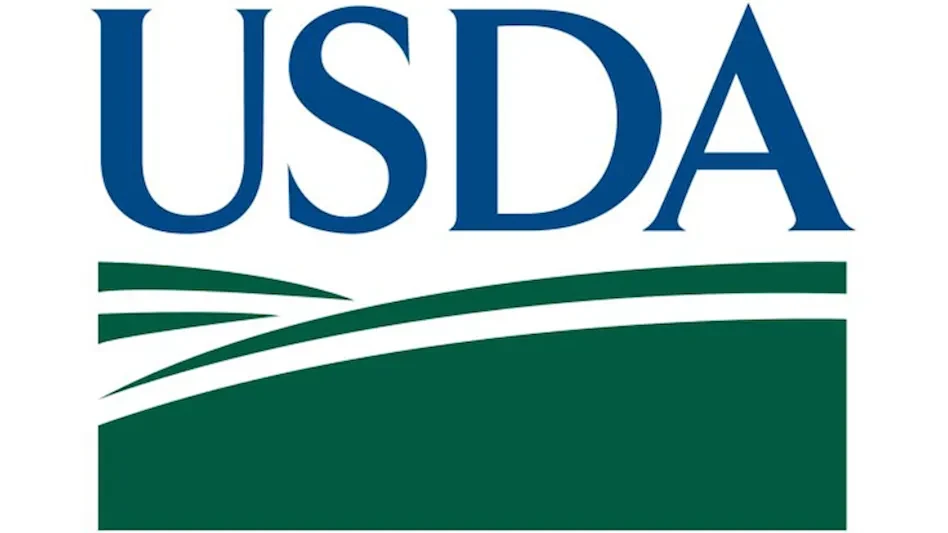 Many manufacturers of food-contact packaging are being asked to attain certification to a Global Food Safety Initiative (GFSI)-benchmarked scheme. Some companies may not understand why they need to attain certification in addition to the third-party audits they already use. Others may be overwhelmed by the various certification schemes that are available for food-contact packaging manufacturers. This article should help packaging manufacturers rise to the certification challenge and remove any mystery surrounding the requirements for both packaging manufacturers and food manufacturers whom they supply.
Many manufacturers of food-contact packaging are being asked to attain certification to a Global Food Safety Initiative (GFSI)-benchmarked scheme. Some companies may not understand why they need to attain certification in addition to the third-party audits they already use. Others may be overwhelmed by the various certification schemes that are available for food-contact packaging manufacturers. This article should help packaging manufacturers rise to the certification challenge and remove any mystery surrounding the requirements for both packaging manufacturers and food manufacturers whom they supply.
Benefits of a GFSI audit
All GFSI-benchmarked standards require that a facility organize its Quality Management System (QMS) into policies, programs, procedures, work instructions, and records.
Other benefits of using a GFSI-benchmarked scheme are that it sets a consistent demonstrable standard, is globally recognized, includes supplier-owned audits, is third-party accredited, and represents the “due diligence” defense.
GFSI FAQs
Why does the food industry want packaging manufacturers to have a GFSI-benchmarked audit?
Food-contact packaging comes in direct contact with food; whether it is a pizza box, soda can, water bottle, or a restaurant carry-out container. Physical foreign material contamination (e.g., metal, wood, glass, or hair), biological contamination (e.g., pathogens such as E.coli), and chemical contamination (e.g., inks, allergens, or solvents) are some of the potential risks that may be transmitted through food containers.
Therefore, a manufacturer of food-contact packaging must follow the same Good Manufacturing Practices (GMPs) as food manufacturers and have systems in place to eliminate food safety risks or reduce them to an acceptable level.
GFSI-benchmarked standards, established by scheme owners including BRC, SQF, and ISO, are a set of requirements to help manufacturers and converters of packaging and packaging materials produce safe, hygienic, and legal products to the quality required by their customers.
How do GFSI-benchmarked audits differ from GMP inspections?
GFSI-benchmarked food safety audits are different than traditional GMP inspections, both in content and approach. Auditors must evaluate facilities according to the rules and code of conduct mandated by the standard owners and must audit to the standard.
 GMP inspections can be flexible depending on the type of facility, the specific risks identified by a company, and the current food safety capability of the facility. GFSI auditors , however, are considerably more restricted in performing certification audits, as they are not allowed to consult during audits and may not give recommendations.
GMP inspections can be flexible depending on the type of facility, the specific risks identified by a company, and the current food safety capability of the facility. GFSI auditors , however, are considerably more restricted in performing certification audits, as they are not allowed to consult during audits and may not give recommendations.
All GFSI-benchmarked standards require at least the following components: procedures, performance records and training records for the personnel performing the tasks, document control, and record notation requirements.
The clauses within a given scheme are very specific by design. With many clauses using words and phrases such as shall, must be documented, contain as a minimum, based on risk assessment, etc., there is little opportunity for auditor interpretation of compliance or non-compliance. Again, the auditors must see evidence of documentation and/or performance when these words are used, or they are not following the requirement of the standard and are not performing an adequate assessment.
Are there differences between the requirements of the various GFSI-benchmarked packaging audits?
Yes and no. All three schemes discussed in this article have similar requirements in the Mandatory Elements (SQF), and Fundamental Statement of Intent (BRC) sections. FSSC 22000 also addresses the same requirements. However, they approach them differently. The nature of the benchmarking process ensures that all benchmarked schemes meet a minimum set of requirements outlined by GFSI.
However, each scheme may take a little different approach to the requirements. They may, for example, include additional requirements, or be more prescriptive in the content of a given program.
What program-implementation pitfalls or challenges do packaging manufacturers commonly face?
The process for implementing comprehensive product safety, quality, and hygiene systems to meet the requirements of any of these standards needs to be managed by a team with relevant skills and experience.
The number of team members needs to be appropriate to the size and structure of the company and should include representatives of each department.
Senior management commitment is a requirement for all of the schemes, and that can be a challenge for some companies.
A site must assess itself in order to have an understanding of the current situation and identify which areas need work to close the gaps between current conditions and the requirements of the new standard. To do so, the packaging management team needs knowledge of the operations carried out within the company, and its role is to understand the requirements of the standard, implement the standard, ensure that the site continues to meet the requirements, and develop continual improvement.
The end goal isn’t simply to achieve certification against the standard, but to ensure that an ongoing culture of quality, hygiene, and product safety is established and maintained within the organization. This will ensure continued meeting of the requirements of the standards.
Management should ensure an open approach to reporting and addressing concerns about working practices and should promote continuous improvement throughout the business.
Another caution for a company that is implementing and maintaining scheme-compliant programs is to ensure that it has a mechanism in place for remaining current with changes in the standards.
GFSI: Getting Started—An Overview of The Schemes
SQF Level II, Edition 7.1 and Module 13 for Packaging includes prerequisite programs, HACCP, and legality, but not product quality. SQF certification is based on government and industry food safety requirements, so businesses at every level have the documentation they need to demonstrate the steps they’ve taken to increase food safety.
Module 2 defines the core required elements of the SQF code that provide protection and assurance and form the foundation of the supplier’s SQF system. It also points to the industry-specific prerequisite programs that are found in Module 13 (food-contact packaging) of the SQF code. Module 2 must be paired with implementation of the relevant GMP module for SQF certification.
 The SQF code recognizes that every business is different and that some SQF system elements may not apply to some food businesses. However, it is expected that the majority of the elements of Module 2 apply to the majority of food businesses, and where they are applicable, must be documented and implemented. However, a number of the Module 2 elements are mandatory and must be implemented and audited for certification to be granted.
The SQF code recognizes that every business is different and that some SQF system elements may not apply to some food businesses. However, it is expected that the majority of the elements of Module 2 apply to the majority of food businesses, and where they are applicable, must be documented and implemented. However, a number of the Module 2 elements are mandatory and must be implemented and audited for certification to be granted.
Issue 4 of the BRC/IOP Global Standard for Packaging can be used by any manufacturer producing packaging materials for all types of products. It recognizes two levels of hygiene risk associated with different types of packaging materials: The high-hygiene risk category applies to materials that come into direct contact with food; non-food packaging is low-hygiene risk.
The BRC Packaging and Packaging Materials Standard focuses on quality and functional aspects of packaging which complement the established requirements of food packaging plant GMPs.
The principal BRC requirements are:
- the adoption of management commitment;
- hazard and risk assessment; quality management systems, including product traceability and management of recalls;
- site environment and operating standards, including product storage, maintenance, cleaning, pest control, equipment, and security;
- personnel training and hygiene requirements.
Manufacturing facilities that are certified to a GFSI-benchmarked audit scheme are tasked with ensuring that their contracted third-party packaging material providers and packagers are complying with GFSI packaging requirements.
FSSC 22000:2009 includes food safety and legality, but not product quality. This scheme comprises ISO 22000 Standards for Food Processing. To be certified, a facility also must adhere to the requirements of the PAS 223 (Packaging), which are addendums to ISO 22000 that address prerequisite programs.
The FSSC 22000 - ISO 22000:2005(E) International Standard specifies the requirements for a food safety management system that combines generally recognized key elements to ensure food safety along the food chain, up to the point of final consumption, including interactive communication, system management, prerequisite programs, and HACCP principles.
By means of auditable requirements, it combines the HACCP plan with prerequisite programs (PRPs). Hazard analysis is the key to an effective food safety management system, since conducting a hazard analysis assists in organizing the knowledge required to establish an effective combination of control measures.
Conclusion
The global growth of GFSI-benchmarked audits has been notable. It is not a surprise that the scope of the initiative is reaching all aspects of the food industry, including food packaging manufacturers. Each standard, while a bit different, is designed to define the programs and systems needed to ensure safe and legal products. Packaging manufacturers who select a scheme, implement its requirements, and attain certification will realize food safety and business advantages.
The author is Manager Certification Body GFSI Packaging.
Latest from Quality Assurance & Food Safety
- ReposiTrak Welcomes 50 New Produce Suppliers to Food Traceability Network
- First Bird Flu Death Reported in United States
- FDA Issues Final Guidance on Action Levels for Lead in Processed Food Intended for Babies, Young Children
- Penn State Offers Course to Assist Food Processors in Controlling Listeria
- Tanzania Embraces One Health Approach to Enhance Food Safety and Trade
- FDA Releases Allergen, Food Safety and Plant-Based Alternative Labeling Guidance
- Bird Flu Suspected in Some Ohio Waterfowl
- IFSAC Releases Annual Report for 2022 on Sources of Foodborne Illness





